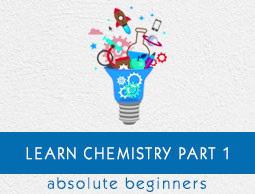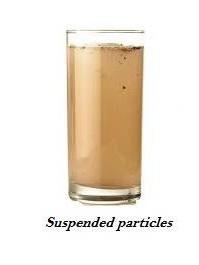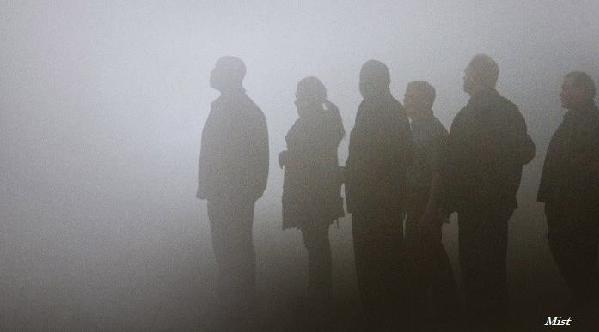The temperature, at which solid melt and transform into the liquid (at the given atmospheric pressure), is known as “melting point.”
The melting point of a solid is an indication of the strength of the force of attraction between its particles.
The melting point of ice is 273.16 K, i.e. 00 C.
The process of melting (i.e. change of solid state into liquid state) is known as fusion.
The amount of heat energy, which is required to change 1 kg of a solid materials into liquid materials at a given atmospheric pressure, is known as the latent heat of fusion.
The temperature at which a liquid starts boiling at the given atmospheric pressure is known as “boiling point.”
The boiling point of water is 373 K i.e. 1000C.
A change of state of a matter directly from solid to gas without changing into liquid state (or vice versa) is known as “sublimation.”
The phenomenon i.e. change of a liquid into vapors at any temperature below its boiling point is known as “evaporation.”
Solid carbon dioxide (CO2) is stored under high pressure.
A scale, used in measuring the hydrogen ion concentration in a solution, is known as pH scale.
The ‘p’ in pH stands for ‘potenz’, it is a German term, which means ‘power’.
pH value is taken simply as a number, which indicates the acidic or basic nature of a solution. So, if the concentration of hydronium ion is higher, then the value of pH would be lower.
The value of pH scale ranges between ‘0’ and ’14;’ so, if pH value is measured ‘0,’ it means – it is very acidic and if it is 14, then it means – it very alkaline.
The neutral value of pH scale is ‘7’.
On a pH scale, values less than 7 represent an acidic solution and values greater than 7 represent a basic solution.
Usually, paper impregnated with the common indicator is used for measuring the pH (see the image given below)−
The pH value of a human body ranges between 7.0 and 7.8.
The stomach of a human body produces hydrochloric acid that helps in the digestion of food; surprisingly, it does not harm the stomach anyway.
However, when the stomach produces too much acid (known as indigestion), it causes pain and irritation. To get relief from this pain, doctors suggest the use of bases known as antacids.
These antacids neutralize and control the increased amount of acid.
The teeth, which are made up of calcium phosphate, is the hardest substance in the body. However, when the pH in the mouth decreases (below 5.5), it corrodes the teeth.
The salt, normally, is formed by the combination of hydrochloric acid and sodium hydroxide solution; and, the combination is known as sodium chloride.
When the pH value of rain water is measured as less than 5.6, it is known as acid rain.
When acid rain flows into the rivers, then it also lowers the pH of the river water
The acidic river water is threat for the survival of aquatic life.
The materials, which are not sonorous and are poor conductors of heat and electricity, are known as non-metals. E.g. sulphur, carbon, oxygen, phosphorus, etc.
Some metals, such as sodium and potassium are soft and can be cut with a knife.
Mercury is the only metal, which remains in liquid state at room temperature.
When sulphur dioxide is dissolved in water, sulphurous acid is formed. Illustration - Sulphur dioxide (SO2) + Water (H2O) → Sulphurous acid (H2SO3).
Oxides of non-metals are acidic in nature.
The sulphurous acid changes blue litmus paper red.
Phosphorus is a very reactive non-metal and it catches fire whenever exposed to air.
To prevent the contact of phosphorus with atmospheric oxygen, Phosphorus is stored in water.
On burning, metals easily react with oxygen and produce metal oxides, these are basic in nature.
Non-metals react with oxygen and produce non- metallic oxides; these are acidic in nature.
Some metals react with water and produce metal hydroxides and hydrogen gas.
Nonmetals normally do not react with water.
Metals also react with acids and produce hydrogen gas and metal salts.
Non-metals normally do not react with acids.
All metals exist in the solid form at room temperature, except mercury.
Gallium and caesium have very low melting points; these two metals get melt even on palm.
Iodine is a non-metal, but it is lustrous (lustrous is the property of metal).
Carbon is a non-metal that can exist in different forms. Each form is called an allotrope.
Diamond is an allotrope of carbon and it is the hardest natural substance known.
The melting and boiling point of diamond is very high.
Graphite is also allotrope of carbon; it is a conductor of electricity.
Alkali metals, such as lithium, potassium, sodium, are the examples of soft metals, as they can be cut with a knife.
Nearly all metals when combined with oxygen, it forms metal oxides.
Different metals have different frequency of reaction; some react slow, but some react very fast. E.g. potassium and sodium are very reactive and they catch fire only if kept in the open.
Therefore, potassium and sodium are kept immersed in kerosene oil so that they cannot catch fire.
However, among all metals, sodium (most likely), is the most reactive metal.
Anodizing is a process of forming a thick protective oxide layer of aluminum and it protects from corrosion.
The elements or compounds that occur naturally in the crust (upper layer) of the earth, are known as minerals.
The minerals in raw form is known as ores. E.g. gold, silver, iron etc. (iron ore shown in the image given below) −
Newlands also compared it with the octaves that found in music (see the table given above).
In the Indian music, the seven musical notes are – sa, re, ga, ma, pa, da, ni; however, in the west, the musical notes are – do, re, mi, fa, so, la, ti.
Further, in order to fit some elements into his Table, Newlands put two elements in the same cell (see the table given above – cobalt & nickel kept in same cell), but this technique did not work, as they have different properties.
However, the law of octave had limitation, as was applicable up to calcium only; and, after calcium every eighth element had not the properties similar to that of the first.
In 1913, Henry Moseley, an English physicist discovered that the atomic number of an element is a more fundamental property in comparison to its atomic mass.
Based on Moseley’s discovery, Mendeléev’s Periodic Law was modified and atomic number was adopted as the basis of Modern Periodic Table.
The Modern Periodic Law states −
‘Properties of elements are a periodic function of their atomic number.’
18 vertical columns known as ‘groups’ and 7 horizontal rows known as ‘periods’ are defined in the Modern Periodic Table.
In Modern Periodic Table, the elements are arranged in such a way that it shows periodicity of properties such as atomic size, valency, or combining capacity and metallic and non-metallic characteristics (of elements).
In Modern Periodic Table, the metallic character decreases across a period and increases down the group.
On the other hand, non-metals are electronegative, as they tend to form bonds by gaining electrons.
In Modern Periodic Table, the non-metals are placed on the right-hand side (from the top).
Nylon was the first fully synthetic fiber.
Polyester is also a synthetic fiber; it is wrinkle free fiber. E.g. Terylene.
PET is one of the familiar form of polyesters and it is used for making utensils, bottles, films, wires, and many other useful products.
Polyester (Poly + ester) is made up of the repeating units of a chemical known as an ester.
Plastic is also a sort of polymer like the synthetic fiber.
Polythene (Poly + ethene) is a common example of a plastic.
There are some plastics, which when molded once, cannot be softened by heating; therefore, these are known as thermosetting plastics. E.g. Bakelite and melamine.
Bakelite is a poor conductor of heat and electricity; therefore, it is used in making electrical switches, handles of various utensils, etc.
Melamine resists fire and can tolerate heat better than other plastics; therefore, it is used for making floor tiles, kitchenware, and fabrics.
A material, which gets decomposed through the natural processes, e.g. action by bacteria, is known as biodegradable.
A material, which cannot be easily decomposed by natural processes, is known as non-biodegradable.
Plastic is not an environment friendly.
Coal is used in thermal power plants to produce electricity.
Under high pressure and high temperature, the dead plants those got buried inside the Earth, got slowly converted into coal.
Coal contains mainly carbon.
The slow process of conversion of dead vegetation into coal is known as carbonization.
Coal is formed from the remains of vegetation; therefore, it is also known as fossil fuel.
When coal burns, it produces mainly carbon dioxide gas.
When coal is processed in industry, it produces some useful products such as coke, coal tar, and coal gas.
Coke is a hard, porous, and black substance.
Coke is pure form of carbon.
Coke is largely used in the manufacturing of steel and in the extraction of many metals.
Coal tar is a black, thick liquid with unpleasant smell.
Coal tar is mixture of about 200 substances.
The products, those are obtained from coal tar, are used as starting materials for manufacturing various substances used in everyday life and in industry. E.g. explosives, paints, roofing materials, synthetic dyes, drugs, perfumes, plastics, photographic materials, etc.
Naphthalene balls, obtained from coal tar, are used to repel moths and other insects.
Bitumen, obtained from petroleum product, is used in place of coal-tar for metalling the roads.
During the processing of coal to get coke, coal gas is obtained.
In 1810, for the first time in London, UK, coal gas was used for street lighting and in 1820, in New York, USA.
At present, coal gas is used as a source of heat.
Petrol and diesel are obtained from a natural resource known as petroleum.
Petroleum was formed from the organisms living in the sea.
Over millions of years (the dead organisms buried inside the earth), in the presence high temperature, high pressure, and in the absence of air, the dead organisms transformed into petroleum and natural gas.
In 1859, the world’s first oil well was drilled in Pennsylvania, USA.
In 1867, oil was stuck at Makum in Assam, India.
In India, petroleum is largely found in Assam, Gujarat, Mumbai High, Maharashtra, and in the river basins of Godavari and Krishna.
The following image illustrates the layer of gas and oil −
Petroleum is a mixture of various constituents such as petrol, petroleum gas, diesel, lubricating oil, paraffin wax, etc.
The process of separating the various constituents of petroleum is known as refining.
The different useful substances, which are obtained from the petroleum and natural gas, are known as ‘Petrochemicals.’
Petrochemicals are used in the manufacturing of detergents, fibers (polyester, nylon, acrylic etc.), polythene and other man-made plastics.
Hydrogen gas, which is obtained from natural gas, is used in the production of fertilizers (urea).
Because of having the great commercial importance, petroleum is also known as ‘black gold.’
Natural gas is normally stored under high pressure and hence known as Compressed Natural Gas (CNG).
CNG is used for power generation and fuel for vehicles.
The following table illustrates various constituents of petroleum and their uses −
| Constituents of petroleum |
Uses |
| Petroleum Gas in Liquid form (LPG) |
Fuel for home and industry |
| Petrol |
Motor fuel, aviation fuel, solvent for dry cleaning |
| Diesel |
Fuel for heavy motor vehicles, electric generators |
| Kerosene |
Fuel for stoves, lamps and for jet aircrafts |
| Lubricating oil |
Lubrication |
| Paraffin wax |
Ointments, candles, Vaseline, etc. |
| Bitumen |
Paints, road surfacing |
Different substances catch fire at different temperatures.
The lowest temperature at which a substance catches fire is known as its ignition temperature.
A match contains antimony trisulphide and potassium chlorate.
The rubbing surface of match contains powdered glass and a little red phosphorus.
Red phosphorus is much less dangerous.
When the match stick is struck against the rubbing surface, some red phosphorus gets converted into white phosphorus; the process immediately reacts with potassium chlorate present in the matchstick head and produce enough heat to ignite antimony trisulphide; likewise, combustion starts.
The substances, which have very low ignition temperature and can easily catch fire with a flame, are known as inflammable substances. E. g. petrol, alcohol, Liquified Petroleum Gas (LPG), etc.




















































